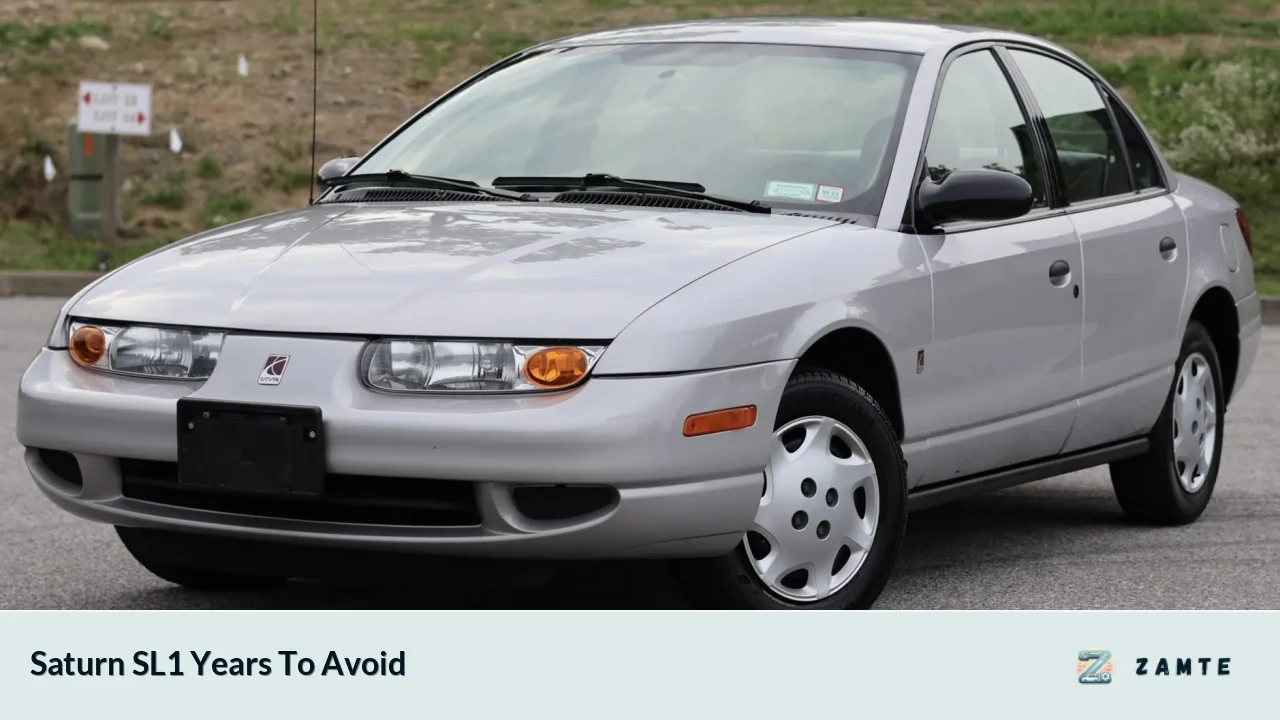The Saturn SL1 was a popular compact car produced by General Motors from 1991 to 2002. While generally reliable, certain model years have been known to have more issues than others. This guide will help you identify which Saturn SL1 years to avoid and why, as well as provide valuable information for current and prospective owners.
| Model Year | Common Issues | Recommendation |
|---|---|---|
| 1991-1995 | Oil consumption, transmission problems | Avoid |
| 1996-1999 | Improved reliability, some oil consumption | Consider with caution |
| 2000-2002 | Most reliable years, fewer issues | Recommended |
Oil Consumption: The Achilles' Heel of Early Saturn SL1s
The most notorious issue plaguing Saturn SL1 models, particularly those from 1991 to 1995, is excessive oil consumption. This problem stems from a design flaw in the piston rings, which can lead to significant oil burn-off and potential engine damage if not addressed[1].
Symptoms of oil consumption issues:
- Blue exhaust smoke
- Frequent need to add oil between changes
- Poor fuel economy
- Engine performance issues
Many owners report having to add a quart of oil every 1,000 miles or less, which is far from normal. This issue can lead to premature engine wear and, in severe cases, complete engine failure if not properly managed[2].
Transmission Woes: Another Red Flag for Early Models
Another significant concern for Saturn SL1 owners, particularly in models from 1991 to 1995, is transmission problems. Both manual and automatic transmissions have been known to exhibit issues, with automatic transmissions being particularly problematic[3].
Common transmission issues include:
- Hard shifting
- Slipping gears
- Complete transmission failure
These problems often manifest around the 100,000-mile mark, making early SL1 models potentially expensive to maintain in the long run[4].
Improved Reliability: The 1996-1999 Saturn SL1 Models
While not entirely free from issues, the 1996-1999 Saturn SL1 models showed significant improvements over their predecessors. GM addressed some of the earlier design flaws, resulting in more reliable vehicles overall[5].
Improvements in the 1996-1999 models:
- Reduced oil consumption (though still present in some vehicles)
- More reliable transmissions
- Better overall build quality
However, potential buyers should still be cautious and have these models thoroughly inspected before purchase, as some oil consumption issues may persist.
The Golden Years: 2000-2002 Saturn SL1 Models
The final years of Saturn SL1 production, from 2000 to 2002, are generally considered the most reliable. By this point, GM had ironed out many of the earlier issues, resulting in a more dependable vehicle.
Advantages of the 2000-2002 models:
- Significantly reduced oil consumption
- More reliable transmissions
- Improved overall durability
These later models are often the best choice for those looking to purchase a used Saturn SL1, as they offer the best balance of reliability and affordability.
Maintenance Tips for Saturn SL1 Owners
Regardless of the model year, proper maintenance is crucial for keeping your Saturn SL1 running smoothly. Here are some essential tips:
- Regular oil changes: Given the oil consumption issues, frequent oil changes and level checks are crucial.
- Transmission fluid maintenance: Regular transmission fluid changes can help prevent or delay transmission problems.
- Coolant system care: Keep an eye on coolant levels and replace the coolant as recommended to prevent overheating issues.
- Timing chain replacement: The timing chain should be replaced around 100,000 miles to prevent engine damage.
- Regular inspections: Have your SL1 inspected by a qualified mechanic regularly to catch potential issues early.
The Saturn SL1's Legacy: A Mixed Bag of Reliability
Despite its issues, the Saturn SL1 has developed a cult following among some car enthusiasts. Its simple design, ease of repair, and affordable parts make it an attractive option for DIY mechanics and budget-conscious drivers.
However, it's essential to weigh the potential repair costs against the purchase price, especially for earlier models. While a well-maintained SL1 can be a reliable and economical choice, a neglected one can quickly become a money pit.
FAQs
- What are the worst years for the Saturn SL1?
The 1991-1995 models are generally considered the least reliable due to oil consumption and transmission issues. - How often should I check the oil in my Saturn SL1?
It's recommended to check the oil level every 500-1000 miles, especially in older models prone to oil consumption. - Are Saturn SL1 cars expensive to maintain?
Generally, Saturn SL1 cars are inexpensive to maintain due to their simple design and widely available parts. - What's the average lifespan of a Saturn SL1?
With proper maintenance, a Saturn SL1 can last 200,000 miles or more, especially the later models. - Is it worth buying a used Saturn SL1?
It can be, especially if you're looking at a 2000-2002 model that has been well-maintained. Always get a pre-purchase inspection.
👉 Check this out: Avoid These Hyundai Genesis Coupe Model Years
